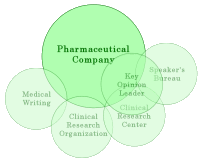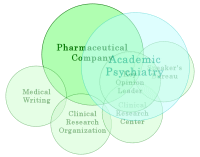Author’s Statement of Bias: All of this scientific objectification involved in reviewing these studies is something of a regression for me. I left the world of hard science half my life ago, not in flight but rather because of a fascination with subjectivity. And as a practitioner, I found no real conflict between the two – depression was no exception. In my mind, depression was two things – an adjective/adverb or a noun. It was a feeling about life that colored experience and lead people to psychotherapy, the kind I did. And then there was Depression [the noun] that wasn’t a modifier of experience, it was a pervasive determinant of experience – something I thought of as biological. It didn’t take a MADRS or HAM-D to tell the difference – you can feel it in the waiting room. I guess it was sort of like Freud and Kraeplin were talking about two different things and I appreciated both views. When the Charlie Nemeroffs of the world appeared, it took me a while to understand that they talked as if all depression was a noun, a thing to be medicated as if it were a disease. Since I didn’t believe that, I drifted away from the Psychiatric world as it was in the 1990s and 2000s. Now I find myself going back over the things I got away from. I’m biased, but I think [hope] it’s the bias of experience. When I look at these studies, I don’t think the people in these clinical trials all have Major Depressive Disorder. I’ve seen enough of MDD to know that they don’t improve like the ones in those trials on placebos. Major Depressive Disorder is a clinically distinct disease to me.
That said, what are we to make of the claims that Seroquel XR or Abilify are indicated as an augmentation to Antidepressants in patients who don’t respond? These studies all rely on the Montgomery-Åsberg Depression Rating Scale as the primary outcome variable. It’s an observer rated ten item scale with 0-6 levels for each item [so the range of scores is 0 to 60]. I’ve included an abbreviated version of the items in this post.
This table compares the MADRS scores from the studies used by the FDA to approve Seroquel XR and Abilify as augmentation for Treatment Resistant Depression. Look in the row labeled Differences. That’s the improvement after six weeks of the Atypical Antipsychotic in the MADRS score. Then look at the MADRS items below and see if an improvement of 2.40 to 3.55 points seems that relevant on a 60 point scale. It sure doesn’t look that way to me. I say statistical but irrelevant. And when I look at the subject’s own ratings, and I see that their ratings were not statistically significant between Placebo and Medication, I say the same thing:
| Montgomery-Åsberg Depression Rating Scale Scores [Augmentation] |
|||||||
| Parameter | Seroquel XR | Abilify | |||||
| El-Khalili et al |
CN138139 | CN138163 | |||||
| Placebo |
150mg/day |
300 mg/day |
Placebo | Rx | Placebo | Rx | |
|
|
|||||||
| MADRS Baseline |
27.6 | 27.2 | 27.6 | 25.65 | 25.88 | 25.55 | 24.59 |
| MADRS Change | -11.89 | -14.29 | -15.44 | -5.77 | -8.78 | -5.65 | -8.49 |
| Difference | -2.40 | -3.55 | -3.01 | -2.84 | |||
| NNT |
18 | 8 | 7 | ||||
| Montgomery-Åsberg Depression Rating Scale
|
|||
| 1. Apparent Sadness | 6. Concentration Difficulties | ||
| 0 | No sadness. | 0 | No difficulties in concentrating. |
| 2 | Looks dispirited but does brighten up without difficulty. | 2 | Occasional difficulties in collecting one’s thoughts. |
| 4 | Appears sad and unhappy most of the time. | 4 | Difficulties in concentrating and sustaining thought which reduces ability to read or hold a conversation. |
| 6 | Looks miserable all the time. Extremely despondent. | 6 | Unable to read or converse without great initiative. |
| 2. Reported Sadness | 7. Lassitude | ||
| 0 | Occasional sadness in keeping with the circumstances. | 0 | Hardly no difficulty in getting started. No sluggishness. |
| 2 | Sad or low but brightens up without difficulty. | 2 | Difficulties in starting activities. |
| 4 | Pervasive feelings of sadness or gloominess. The mood is still influenced by external circumstances. | 4 | Difficulties in starting simple routine activities which are carried out with effort. |
| 6 | Continuous or unvarying sadness, misery or despondency. | 6 | Complete lassitude. Unable to do anything without help. |
| 3. Inner Tension | 8. Inability to Feel | ||
| 0 | Placid. Only reflecting inner tension. | 0 | Normal interest in the surroundings and in other people. |
| 2 | Occasional feelings of edginess and ill-defined discomfort. | 2 | Reduced ability to enjoy usual interest. |
| 4 | Continuous feelings of inner tension or intermittent panic which the patient can only master with some difficulty. | 4 | Loss of interest in surroundings. Loss of feelings for friends and acquaintances. |
| 6 | Unrelenting dread or anguish. Overwhelming panic. | 6 | The experience of being emotionally paralyzed, inability to feel anger, grief or pleasure and a complete or even painful failure to feel for close relatives and friends. |
| 4. Reduced Sleep | 9. Pessimistic Thoughts | ||
| 0 | Sleeps as usual. | 0 | No pessimistic thoughts. |
| 2 | Slight difficulty dropping off to sleep or slightly reduced light or fitful sleep. | 2 | Fluctuating ideas of failure, self-reproach or self-depreciation. |
| 4 | Sleep reduced or broken by at least two hours. | 4 | Persistent self-accusations, or definite but still rational ideas of guilt or sin. Increasingly pessimistic about the future. |
| 6 | Less than two or three hours sleep. | 6 | Delusions of ruin, remorse or unredeemable sin. Selfaccusations which are absurd and unshakable. |
| 5. Reduced Appetite | 10. Suicidal Thoughts | ||
| 0 | Normal or increased appetite. | 0 | Enjoys life or takes it as it comes. |
| 2 | Slightly reduced appetite. | 2 | Weary of life. Only fleeting suicidal thoughts. |
| 4 | No appetite. Food is tasteless. | 4 | Probably better off dead. Suicidal thoughts are common, and suicide is considered as a possible solution, but without specific plans or intention. |
| 6 | Needs persuasion to eat. | 6 | Explicit plans for suicide when there is an opportunity. Active preparations for suicide. |
 They’re all in it together – Pharma, their paid physician Key Opinion Leaders who may be investigators at Clinical Research Centers that might be affiliated with a Clinical Research Organization and might be an author who is on the Speaker’s Bureau and fronts for a medical writer who might be with a Clinical Research Organization or a Medical Writing Company etc. etc. Whatever the arrangement in a particular case, all of these elements are part of every one of these articles and Clinical Trials I’ve reviewed. And the Pharmaceutical Company pays and controls all of them.
They’re all in it together – Pharma, their paid physician Key Opinion Leaders who may be investigators at Clinical Research Centers that might be affiliated with a Clinical Research Organization and might be an author who is on the Speaker’s Bureau and fronts for a medical writer who might be with a Clinical Research Organization or a Medical Writing Company etc. etc. Whatever the arrangement in a particular case, all of these elements are part of every one of these articles and Clinical Trials I’ve reviewed. And the Pharmaceutical Company pays and controls all of them.
 And with this business of Augmentation of Antidepressants with Atypical Antipsychotics in Treatment Resistant Depression, they’ve really outdone themselves because it is a scientifically unsupported, unsupportable premise. Could anything be worse? Sure. It’s on the left. Chairmen of Departments and high ranking faculty members from our best academic institutions are part of this system – using Pharma money to support their Departments, schlepping around the country as Scientific Advisers, on Speaker’s Bureaus, giving CMEs, and being Journal Editors publishing these CRO-Charts. It’s downright Faustian…
And with this business of Augmentation of Antidepressants with Atypical Antipsychotics in Treatment Resistant Depression, they’ve really outdone themselves because it is a scientifically unsupported, unsupportable premise. Could anything be worse? Sure. It’s on the left. Chairmen of Departments and high ranking faculty members from our best academic institutions are part of this system – using Pharma money to support their Departments, schlepping around the country as Scientific Advisers, on Speaker’s Bureaus, giving CMEs, and being Journal Editors publishing these CRO-Charts. It’s downright Faustian…
are you dr nardo?
i graduated 1985 emory med and am a psychiatrist in montgomery al
you (and Alan Stoudemire, God rest his soul) were powerful positive influence